On July 18th Mundo Real visited Macega, an area of Rocinha considered by many to be the community’s poorest and most vulnerable to natural disasters. We went to Macega after intense rains that poured down from July 13th to July 17th resulted in landslides that effected a few houses and small businesses. In one case a man who had left his house for work decided at the last minute to buy bread and return home to provide for his family’s breakfast. When he arrived at his home he heard strange noises and felt slight shifting in the structure of the house and decided to immediately awaken his family of four. They left the house around 6:30 AM and in less than 5 minutes it collapsed under the weight of falling debris. The man, whose family is living with his wife’s relatives, told us the story (see video clip below). We were accompanied by two community journalists/activists Flavio Caffer and Leo Silva.
Ever since the mayor of Rio de Janeiro, Eduardo Paes began his steadfast campaign to remove Laboriaux many have asked the following question: why did the city decided to “immediately remove” Laboriaux and not other areas of Rocinha, like Macega, that are at higher risk and where residents are knowledgeable of this and most are actually willing to be relocated. Residents of Macega, as mentioned, are among the poorest and most vulnerable in Rocinha, the majority live in conditions of abject poverty in an area that is very steep and which lacks basic infrastructure. In Macega few houses have concrete columns and foundations, in contrast to Laboriaux. As the photos indicate most of the homes are simply built from scraps of recycled ply wood, plastic and zinc. The city government condemned most of the houses in Macega months ago, but when we visited the area most of the residents were still living there and many told us they had been provided with absolutely none of the resources necessary to relocate. It is important to understand that the residents of Macega are among the poorest of the poor in one of Brazil largest slum, and the majority of them are unemployed, underemployed, living on minimum wage and/or surviving on hand outs. Many houses in Macega lack running water, sewage infrastructure and in some case even electricity
The situation in Macega is a case study of the need to relocate and/or assist residents whose lives are in serious risk, whether environmental or socio-economic. We support this kind of policy as long as things are done openly and responsibly. Relocating large swaths of Rio de Janeiro’s favelas and other low-income communities as a result of real-estate speculation and other issues related to the city’s ‘re-birth’ in light of the upcoming World Cup and Olympics is not a justified reason to uproot entire neighborhoods. If removals are to occur, and in many cases they need to, e.g. Macega, they should be in areas that are at the highest risk, accompanied by the appropriate scientific data and with the participation of the community. In short, any relocation should take place in accordance to Municipal Law 429, in the City of Rio de Janeiro’s Constitution. Law 429 states that residents forced to move must be presented with an official report detailing the proof that the area is not safe to reside in, and most importantly that those removed have to be provided the option of being relocated to areas close by, so as not to disrupt their social and economic ties, such as their proximity to family, place of work, their children’s schools/day care, etc. (click here for the entire Law on the City’s website: http://www2.rio.rj.gov.br/pgm/leiorganica/leiorganica.html)
Allowing Macega and other similarly vulnerable areas of Rio to remain while demanding that residents of Laboriaux, Estradinha, Villa das Torres, etc, be remove with urgency smacks of hypocrisy and hidden agendas. Couple this with the lack of credible technical evidence and the fact that Eduardo Paes refuses to visit these areas and it becomes difficult to take the City seriously. In Rio de Janeiro we observe or pass-by places like Macega everyday, where people inhabit areas of obvious risk. Housing is a very delicate issue for all of us, as we in the US understand; it is part of the ‘American Dream’. In poorer countries the notion of owning a house, a decent safe place to call home is equally important. So many people in Brazil, for example express to us that their most earnest dream is to own a home, a place to raise their families. Even in Macega, with its steep hillside shanties and lack of basic infrastructure, most residents have tremendous affection for their simple homes and the area where they reside. Nonetheless, most understand the ‘real’ risk of inhabiting the area and would gladly move to safer locations in the vicinity if provided the resources to so.
The dream of decent housing is one shared by so many worldwide and when people’s homes and communities are threatened by suspicious government claims of “imminent and immediate risk” this causes a sense of desperation and despair. It is time for Eduardo Paes and the City to quite playing games with people lives and their emotions and begin a serious campaign to responsibly relocate those living in extreme risk (not just those residing in areas of high real-estate interest). It is time to reinvest in areas like Laboriaux, physically safe but long neglected. Most of Macega’s residents need to be relocated immediately before more property or even lives are lost. Laboriaux urgently needs slope contention walls, slope reinforcement, proper sewage infrastructure, sufficient street lighting and improved garbage. Residents of Laboriaux cannot be let completely off the hook either. We need to initiate sincere educational programs in the area, stressing the need to respect the beautiful rainforest that surrounds Laboriaux on three sides, and quite throwing waste, trash and construction debris into the Tijuca National Forest. These are issues all residents agree on!!!

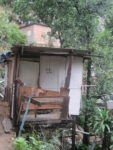
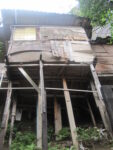
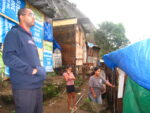
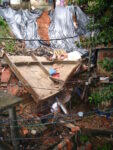
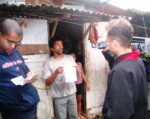

You must be logged in to post a comment.